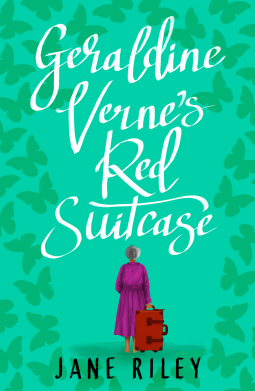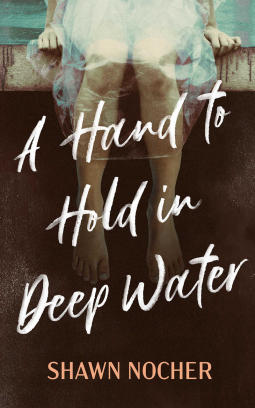4 Stars
A new novel by David
Adams Richards always excites me. He is
an author whose books I insist on buying in hardcover. Like so many of his previous books, this one
enthralled me.
John Delano, at the behest
of Cathy MacDurmot, investigates the violent death and accusations of murder
made against her brother Orville. As a
child, Orville was bullied and shunned because of a physical deformity and his
impoverishment, but he eventually became a renowned archeologist. The people living along New Brunswick’s Miramichi
River, where he grew up and chose to live after extensive travels, took pride
in his accomplishments but also envied him.
Some tried to use Orville’s fame to advance causes but he, a man of
principles, refused to help those whom he knew were only interested in their own
personal gains. His behaviour made him an easy target for
gossip and rumours which destroyed his reputation and led to his being charged
with murder.
Most of the book is
Delano’s lengthy recounting of what he has learned about Orville, his death,
and the charges of murder. His telling
is convoluted and focuses on various people – Brenda, Orville’s first love;
Milt Vale, a literature professor Orville encounters at university; Eunice Wise,
Orville’s neighbour; and Gaby May Crump, a poor child whom Orville tries to
help – and involves flashbacks to various time periods. It soon becomes clear that Orville’s fate is
connected to a novel written by a young man whose work is deemed by some to be “’clumsy
– awkward, inelegant and untrained.'”
Characters
from other novels appear or are mentioned, most notably the protagonist of Mary Cyr, Paul Amos of Incidents in the Life of Markus Paul and John Delano of Principles to Live By. There
are similarities among the characters of these books. So often his protagonists are people who are
at odds with a society where appearances, status, and political correctness
take precedence. For instance, John
Delano is much like Orville; both are intelligent men with uncompromising codes
of honour. John focused his life on
rooting out evil whereas Orville was devoted to a search for beauty: “’goodness,
kindness and simplicity – and that’s
the beauty he was seeking, it was nothing else than that.’” Like Mary Cyr, Orville is a deeply wounded
person who falls victim to exaggerated rumours and sensationalized gossip.
Orville
believes evil exists, and this novel, like others by David Adams Richards, has
its villains. Eunice Wise is
self-righteous and totally lacking in empathy:
“’She relished her right never to really
care, but to pretend to care. The
Handmaid’s Tale would titillate and rule her life, but no real handmaid would
she help.’” Eunice reminds me of Melissa
Sapp in Principles to Live By who
portrays herself as an altruist but is a hypocrite because she only does what
will aid her personal ambitions. Several
of the seven deadly sins – pride, greed and envy - make their appearance, and
the willingness of some people to use and manipulate others knows no
bounds.
What
is always impressive about DAR’s books is the memorable characters. The author takes great pains to explain the motivations
of characters – why they behave as they do and make the choices they do. Orville, for example, who is dead and appears
only in flashbacks, emerges as a complex character with positive qualities and
flaws. Orville is maliciously maligned
and scapegoated, but he is at heart a gentle, caring man who possesses the
qualities of true beauty he spent his life seeking. The motivations of other characters are also
thoroughly detailed so that their reactions and decisions are predictable and
totally realistic.
There
are a couple of elements in the book that troubled me. One is the inter-connectedness of all the
characters - though I grew up in a small town and know first-hand how everyone
knows everyone. It is not unusual for a
young man to fall in love with a young woman, but what are the chances that
this particular young man born to this father will meet and fall in love with
this young woman with her “father” and background? Another issue is how John Delano uncovers
some of the information; for instance, how could he know that a man stopped at
a service station and “’was at that moment two feet from’” an item in the
luggage compartment of a bus, or that, for one woman, a man’s name “’seemed to
hover near her at moments in the day’s sun, or at night as she walked the
sidewalk home’”?
As
always, DAR strikes out at people for whom he feels contempt. There are some wonderful one-sentence
disparagements: “’He listened to
broadcasts by the vast, sweeping CBC that he found so pleasurable to listen to,
where so many of our broad-minded reporters live in like-minded cubby holes for
thirty years’” and “Many did not take his doctorate seriously – or as seriously
as they would have if they had thought of it themselves. It’s amazing how certain academics can slough
things off.’” Of course, people who “’”put
on” sensitivity, or concern, or equality’” are targets for his scorn, as are
those who are part of “the rumour mill of rural Canada, the glut of Tim Hortons
gossip.’”
A
novel by DAR is always multi-layered.
There is so much to parse, but this is supposed to be a review, not an
academic essay. I am, once again,
impressed by his compassion for the poor.
His books demonstrate a deep understanding of human behaviour and show
the consequences of judging others on the basis of appearance, background and
gossip. The book deserves to be read and
re-read.
Darkness makes several references to the long-ago
relationship between John Delano and Cathy MacDurmot; I understand that one of
DAR’s first novels, Blood Ties, introduces
the MacDurmot family and describes John and Cathy’s relationship. I’m off to try and find a copy and read it.
In
the meantime, here are links to my reviews of other of David Adams Richards’
novels:
Mary Cyr: https://schatjesshelves.blogspot.com/2018/05/review-of-mary-cyr-by-david-adams.html
Principles to Live By:
https://schatjesshelves.blogspot.com/2016/06/review-of-principles-to-live-by-by.html
Crimes Against My Brother:
https://schatjesshelves.blogspot.com/2016/12/canadian-book-advent-calendar-day-18-r.html
Incidents in the Life of Markus Paul:
https://schatjesshelves.blogspot.com/2015/07/from-schatjes-reviews-archive-incidents.html
The Lost Highway:
https://schatjesshelves.blogspot.com/2017/09/archival-review-lost-highway-by-david.html















